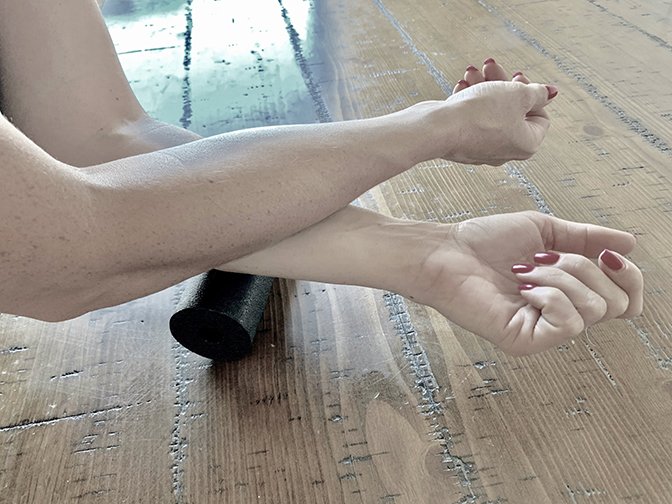Carpal Tunnel Syndrome
Carpal Tunnel Syndrome
What it is:
Irritation of the medial nerve as it passes under the transverse ligament into the wrist.
Signs & Symptoms:
Pain, numbness, tingling and weakness in thumb, index, middle and half of ring finger. Sometimes pain may radiate up the forearm.
Carpal tunnel syndrome occurs when too much pressure is put on the median nerve. There are many reasons why this happens and treatment can vary depending on that answer, so it’s important to see your doctor if symptoms arise. That being said, fibrotic build-up is the most common reason and repetitive use is the cause. The main culprit: keyboarding. The human body was simply not designed to perform the same activity 8hrs a day/5 days a week (ie: “desking” as my friend calls it). For many people with computer jobs, this is their life. Unfortunately, and often to our detriment, our muscles can be extremely adaptive and will power through like a workhorse until they’re pushed to their limits.
Our hands have 29 muscles in them which seems a lot for such a small structure, but makes sense when you think about the dexterity they have. To keep up with the demands we put on it, the body tends to hypertrophy, which means, to grow bigger and thicker wherever is being used most. The small bones at the base of the palm (carpals) form a sling shape with a band that lays over the top (like Seran wrap over a bowl) called the transverse ligament. The throughway it creates in the middle is the carpal tunnel. This is where your tendons and nerves pass through. This is not a huge space and is even smaller in women. When the tendons start to hypertrophy/thicken, they can take up too much space in the tunnel and press against the median nerve. This is when symptoms start to arise. As you can see, these conditions don’t pop up out of nowhere. They take time to build up in the body and then create issues when pushed too far.
The good news is that you can stay ahead of this by stretching and performing self-massage on your wrists and forearms. Don’t let the fact that you don’t have pain keep you from being proactive. This is the best time to get after it. Besides, everyone could use a few minutes away from their keyboard.
Stretches:
Nerve Glide Exercises
Do 3x/day
Hold each move 3 seconds
Do 5-10 sets
Stop any stretch short of causing increased symptoms
Wrist Flexor Stretch
1. Extend your arm in front of you with your palm facing out.
2. Bend your wrist, pointing your hand towards you.
3. With your other hand, gently bend your wrist farther until you feel a mild to moderate stretch in your forearm.
4. Hold for at least 15 to 30 seconds. Repeat 2 to 4 times.
Wrist Extensor Stretch
Repeat steps 1 through 4 of the stretch above, but begin with your extended hand palm down.






